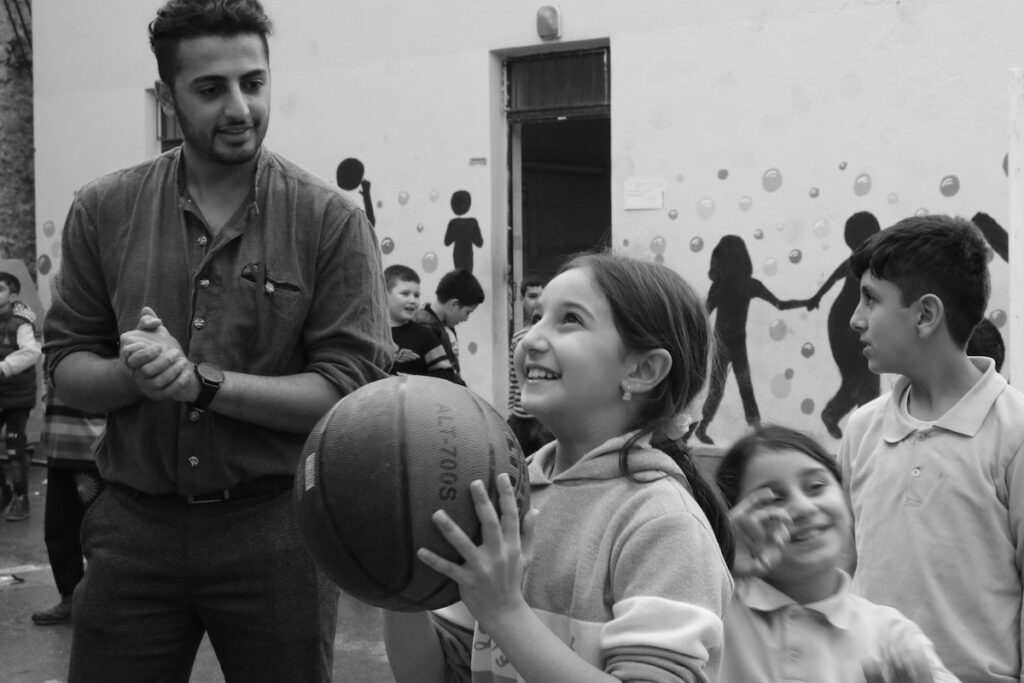
If we knew how best to support and enhance children and young people’s social, emotional and behavioural development and skills, surely, we would wouldn’t we? This paper looks at what we know and what we can do.
Past research has shown us that in order for young people to achieve positive school and life outcomes they must first have good cognitive, social and emotional skills (OECD, 2015). And we know that a balance of these skills results in less engagement with antisocial behaviours (Goodman, Joshi, Nasmin & Tyler, 2015). With young people spending the majority of their time in the school setting it seems an ideal place to develop these skills. The question is how.
For many years educators took on the classroom-based approach as the best method for addressing and enhancing social and emotional skills of children and young people. Yet increasingly, is has been suggested that the best way to develop these skills is by embedding them within daily routine, within activities outside the classroom and through partnerships between the school, parents and the wider community (Barry, Clarke & Dowling, 2017; Oberle, Domitrovich, Meyers & Weissberg, 2016; Jones & Bouffard, 2012; Weare & Nind, 2011). This is known as a whole-school approach.
In 1998, the World Health Organisation (WHO) recommended the whole-school approach when considering interventions, as more likely to have positive outcomes due to the multi-component focus. And since then, there has been a lot of finance and time invested into this concept.

If we knew how best to support and enhance children and young people’s social, emotional and behavioural development and skills, surely, we would wouldn’t we?
Whole-school approach
A whole-school approach can be defined as the entire school community being the unit of change which involves effective coordination between the following three factors:
- Teaching and learning, such as, modelling social and emotional skills daily in the classroom,
- School ethos and school environment, such as, daily activities designed to promote a positive school environment, and
- Family and community partnerships with the school to extend learning and development outside the school environment.
All components should work together so that everyone involved feels involved.
However, although recommended by the WHO, the impact of a whole-school approach remained unclear.
The current study explored data from 45 previous studies (a meta-analysis) to assess the effectiveness of a whole-school approach to turn intervention into impact in relation to social, emotional and behavioural learning and wellbeing.

A whole-school approach involves teaching and learning, school ethos and environment, and family and community partnerships.
Methods
Searching academic databases, the authors screened 4,402 abstracts from which 392 full articles were read. They identified eligible studies to be included in this meta-analysis based on whether they met the following requirements:
- Had an experimental design (randomised controlled trial: RCT) or a quasi-experimental design (less randomised) with a comparison/control group
- Reported data that could allow the authors to measure the strength of the relationship between intervention and outcome (effect sizes)
- Published after 1998 (when the WHO recommended whole-school approaches)
- Published in English
- Adopted a whole-school approach as defined by the WHO
- Suitable for those aged 4-18 years (primary or secondary school)
- Aimed at reducing problem behaviours through the application of newly enhanced social and emotional skills (e.g., bullying prevention)
Forty-five studies (using 30 different interventions) were deemed eligible to include. This resulted in a total of 496,299 children and young people ranging between the ages of 4 and 16 years. Twenty-three of the interventions were suitable for primary school children. Every study was rated for its quality of evidence (weak/moderate/strong) based on factors such as selection bias, data collection method and dropouts.
In line with other meta-analyses in this field (Payton et al., 2008; Sklad, Diekstra, Gravesteijn, Ben & Ritter, 2012), four main outcomes were assessed:
- Social and emotional adjustment
- Behavioural adjustment
- School performance
- Internalising symptoms (e.g., reducing psychopathology such as depression and anxiety).
In order to assess the impact of the findings the authors also considered a selection of possible moderators for each study: research design, the number of months pre- and post-intervention that test measures were completed (and whether the measures were self-report), the year of publication and where the study took place, whether the intervention was for primary or secondary age children, whether it focused on or had a targeted component for pupils at risk of problem behaviour, whether there was a community component included as part of the intervention, and whether there were any fidelity issues around implementation.
Results
When considering the original outcomes, the meta-analysis found that post-intervention:
- Social and emotional adjustment: there was a small but significant increase (d = .220; p = .002)
- Behavioural adjustment: there was a small but significant increase (d = .134; p < .001)
- School performance: there was no significant increase (d = .193; p = .204)
- Internalising symptoms: there was a small but significant increase (d = .109; p = .003)
The authors found that the quality of evidence (weak/moderate/strong) had a significant influence on behavioural adjustment (with the weak/moderate assessment ratings showing the highest effect sizes). They also found that the inclusion of a community component had a significant impact on pupils’ social and emotional adjustment and that the origin of the study also had a significant impact on social and emotional adjustment (higher effect sizes for the 44% of studies conducted in the USA).

This review found a small but significant positive impact of the whole-school approach on pupils’ social and emotional adjustment, behavioural adjustment, and internalising symptoms.
Conclusions
- This meta-analysis of 45 studies using 30 different interventions found a small but significant positive impact of the whole-school approach on pupils’ social and emotional adjustment, behavioural adjustment, and internalising symptoms.
- However, they were not found to have an impact on academic achievement.
- Including a community component was found to have an effect, as was the country in which the study took place.
Strengths and limitations
The authors conducted an extensive search to find 45 eligible studies for their meta-analysis. Analysing data from these 45 studies enabled the authors to show the positive impact a whole-school approach can have on pupils’ social and emotional wellbeing. They provide support for the WHO’s 1998 recommendation. However, one must be mindful that it is likely a number of whole-school approach studies have not been published (and were therefore not accessible to the authors) due to null findings. In a meta-analysis, the lack of these unpublished studies could influence the overall strength of the outcomes observed. However, there is nothing more the authors could have done to overcome this difficulty.
Although the recommendation (supported by this paper) is to implement a whole-school intervention, it is not an easy and straightforward feat! Everyone must be committed to implementing and supporting the intervention and it can take years to become fully embedded. Including 45 previous studies provides a valuable insight, but it is very broad: not every whole-school approach will work for every location or demographic.
Certain factors are also likely to encourage sustainability and good implementation of interventions, such as, ongoing assessment and evaluation, school-family-community partnerships and overall communication. More work is required to provide schools across the world with a list of effective and cost-effective whole-school approaches that work best for their socio-economic demographic. Otherwise, schools face the potential of buying an intervention that is not evidence-based in the hope that it will work for the children and young people who they support.
The authors did an excellent job of considering so many potential moderators and factors of interest. However, not every study included had data for these which meant that the power to determine significant impact was reduced. For example, only 8 studies were able to provide data on academic achievement; more data is needed to fully examine the impact of various factors. It would also have been useful to have an indicator of financial cost, intervention duration and the time taken by researchers and teaching staff to successfully implement the intervention. These are crucial pieces of information for schools choosing a whole-school approach intervention.

This review tells us that whole-school approaches work in general, but that doesn’t help individual schools choose which approach is right for them.
Implications for practice
It can be unclear for schools how to support and enhance children and young people’s social, emotional and behavioural development and skills beyond PSHE classroom-based teaching. The authors have clearly shown that a whole-school approach can see positive change. If an intervention is being considered, then schools should identify and invest in a suitable whole-school approach.
More than just a positive impact on children’s adjustment, they can also allow for great investment in professional and personal development and learning of teaching staff, and additional skills in leadership and management. It can promote partnerships between school, parents and the community and encourage collaboration and team-work between staff with regards to leading, embedding, implementing, and/or supporting the intervention. The right whole-school based intervention may not only improve children’s social and emotional wellbeing, but also that of the teaching staff.

The right whole-school approach will improve children’s social and emotional wellbeing, but also that of the teaching staff.
Conflicts of interest
None.
Links
Primary paper
Goldberg, J. M., Sklad, M., Elfrink, T. R., Schreurs, K. M. G., Bohlmeijer, E. T., & Clarke, A. M. (2019). Effectiveness of interventions adopting a whole school approach to enhancing social and emotional development: a meta-analysis. European Journal of Psychology of Education, 34, 755-782. https://doi.org/10.1007/s10212-018-0406-9
Other references
Barry, M. M., Clarke, A. M., & Dowling, K. (2017). Promoting social and emotional wellbeing in schools. Health Education, 117, 434-451.
Goodman, A., Joshi, H., Nasmin, B., & Tyler, C. (2015). Social and emotional skills in childhoof and their long-term effects on adult life. London: Institute of Education.
Jones, S. M., & Bouffard, S. M. (2012). Social and emotional learning in schools: from programs to strategies: social policy report. Society for Research in Child Development, 26, 3-22.
Oberle, E., Domitrovich, C. E., Meyers, D. C., & Weissberg, R. P. (2016). Establishing systemic social and emotional learning approaches in schools: a framework for schoolwide implementation. Cambridge Journal of Education, 46, 277-297.
OECD. (2015). Skills for social progress: the power of social and emotional skills. Paris: OECD Publishing.
Payton, J., Weissberg, R. P., Durlak, J. A., Dymnicki, A. B., Taylor, R. D., Schellinger, K. B., & Pachan, M. (2008). The positive impact of social and emotional learning for kindergarten to eighth-grade students: findings from three scientific reviews. Chicago: Collaborative for Academic, Social, and Emotional Learning.
Sklad, M., Diekstra, R., Gravesteijn, C.M., Ben, J., & Ritter, M. (2012). Effectiveness of school-based universal social, emotional and behavioral programs: do they enhance students’ development in the area of skill, behavior, and adjustment? Psychology in the Schools, 49, 892–909.
Weare, K., & Nind, M. (2011). Mental health promotion and problem prevention in schools: what does the evidence say? Health Promotion International, 26, 29-69.
World Health Organization (WHO). (1998). Health Promoting evaluation: recommendations for Policy-Makers, report of the WHO European Working Group on Health Promotion Evaluation. Copenhagen: WHO.
Photo credits
- Photo by Max Di Capua on Unsplash
- Photo by Brusk Dede on Unsplash
- Photo by Charlein Gracia on Unsplash
- Photo by Clay Banks on Unsplash
- Photo by ThisisEngineering RAEng on Unsplash

We welcome this study and value the insights it provides. A question- about the Whole School Approach [WSA] seems to remain largely unexplored is to do with the expectation of the impact at the level of the individual child. Some children may already have the benefits which could accrue from the WSA because of their positive home-life experience but others may be significantly supported by this approach. This level of analysis is very difficult to carry out but it would be of benefit to a whole school community to recognise that the “mean” benefit will be better appreciated if the “range” of change was also examined at an individual level.